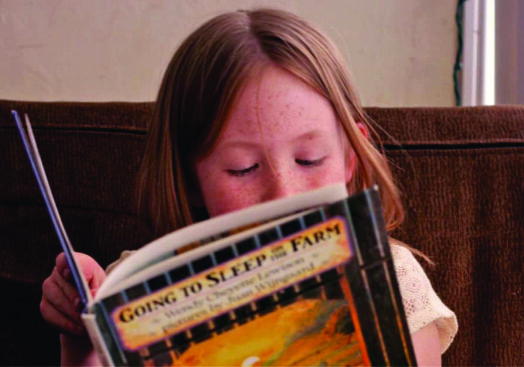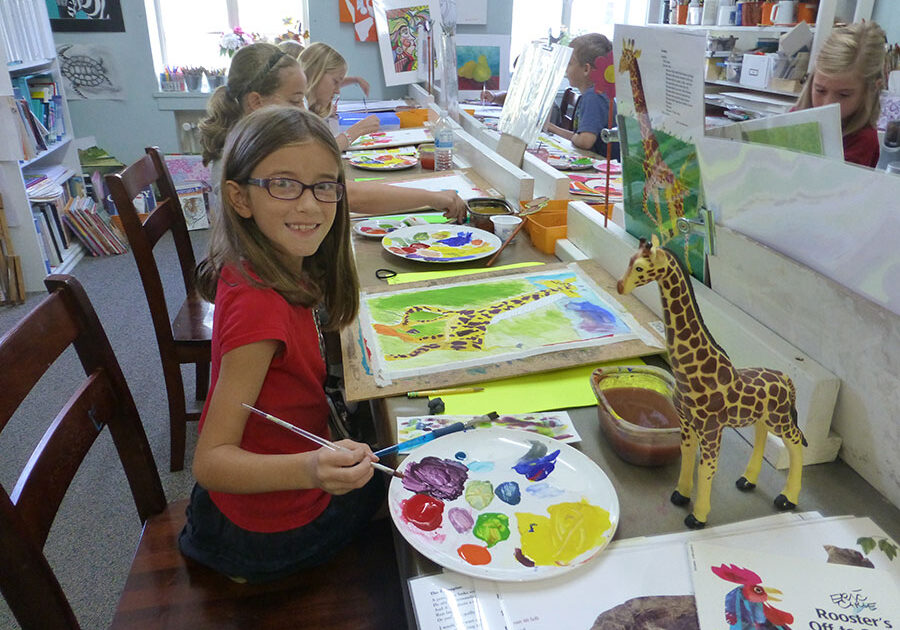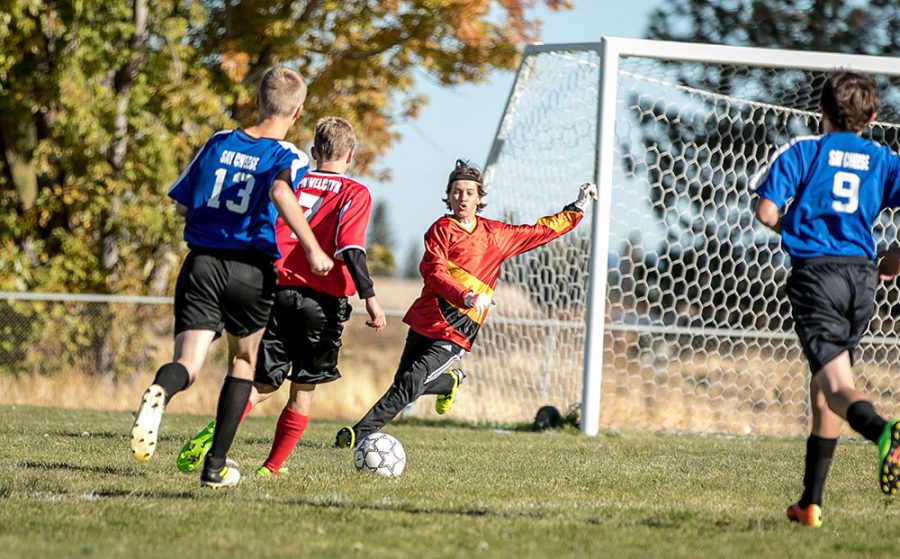These days we’re obsessed with success – particularly big book smarts, AP classes, higher education, and a preoccupation with straight As. But piling on the homework and study time doesn’t always yield results. Pushing our kids for those perfect report cards often backfires if they want, you know, a real life.
Could there be a much simpler, easier path to academic success? There is one thing that can help. It’s not hard to do, it comes naturally to kids and it doesn’t require helping with confusing common core homework that even you can’t figure out. Yay! And, it could be a key to your kids’ school success!
More Physical Activity = Better Grades
Research shows that exercise has a positive effect on school performance. A Finnish study published in the Journal of Science and Medicine in Sport indicates that the more physically active boys are, the better they perform on academic tests including reading and arithmetic.
We should probably take a big hint from Finland. Despite a more laid-back approach to education, the Finnish school system ranks among the best in the world and regularly turns out high-performing students. The publicly funded education program sets children off on the right track with a focus more on play and less on sit-down-and-study tactics, with 50-minute recesses a regular part of the school day. Interesting, right?
In the above study, researchers analyzed children (89 boys and 69 girls) aged six to eight years in grades one to three. Heart rate monitors and movement sensors were used to track active and sedentary activity times.
They found that the more physically active boys were, the more likely they were to score higher on academic tests measuring reading comprehension and arithmetic skills, while more sedentary time-correlated with lower scores.
“High levels of moderate-to-vigorous physical activity and low levels of sedentary time in grade one were related to better reading skills in grades one to three among boys,” says Eero Haapala, Ph.D. “We also observed that boys who had a combination of low levels of physical activity and high levels of sedentary time had the poorest reading skills through grades one to three.”
Interestingly, these results didn’t seem to apply as much to the girls. This could be related to the fact that attention disorders that affect learning, such as ADHD, are more prevalent in boys. Research is proving, again and again, that exercise is “nature’s Ritalin,” an effective method to improve inattention and hyperactivity.
For example, a study in pediatrics involving kids aged seven to nine showed that those who participated in a regular after-school exercise program had better executive function in the brain. This results in improved focus, working memory, and cognitive flexibility – all things that ADHD sufferers struggle with.
Regardless of gender, exercise is good for everyone. Maintaining a regular exercise routine long-term is important, but there are immediate brain benefits as well. Exercising for just 20 minutes prior to taking a test has been shown to boost scores. It’s no wonder, since it burns off excess nervous energy, boosts mood, and helps clear brain fog, thus helping the child think clearly and recall information more easily. A morning workout on a test day is a bright idea!
Body, Mind, Soul
Of course, the benefits don’t stop outside the classroom. Exercise impacts every part of a person’s health – physically, mentally, and emotionally.
You’re probably aware of the more obvious physical perks like increased cardiorespiratory fitness, endurance, and strength, as well as lower body fat and better athletic performance. There are also numerous emotional and mental benefits that can make all the difference in your child’s quality of life.
For one, it’s a natural mood booster. Exercise causes chemical reactions in the body and brain that trigger feelings of well-being. It’s even a proven treatment for depression and anxiety. It’s no surprise that physical activity is a great stress buster. Considering increasing usage of pharmaceuticals for mood disorders in both children and adults, it makes one wonder about over-reliance on medications, especially when we have instant availability to a powerful natural treatment. How about we try moving more?
Make It Happen
Given all this information, I’m dumbfounded as to why a lot of schools in the U.S. are reducing or even eliminating recess. At my first grader’s school, kids lose recess time if they have been acting up in class. Won’t that just compound the problem? (They only get two 15-minute sessions a day anyway.)
Cutting physical activity in favor of sitting and “focusing” for longer periods is counterproductive to the developing brain and body. Even as adults, sitting is the new smoking considering how detrimental it is to overall health.
What’s a frustrated parent to do? You just want to help your kids succeed in life, including doing well in school and staying healthy. Even if your local school system isn’t quite on board with the importance of physical activity, you can do plenty at home to set your kids up for success. Here are a few to start:
1. Lock them outside.
Okay, maybe not lock them out, but you know what I mean. Outdoor playtime naturally fosters fitness, learning, and creativity all at the same time. Help them help themselves by getting outside for a dose of nature and sunshine.
2. Let them go out for sports.
When you sign your kid up for soccer, baseball, track, etc., you’re setting them up for a multipoint system of success. This is the fun alternative to an “exercise routine” with regimented workouts that won’t stick (heck, we struggle with that as adults). It’s better to get them involved in something enjoyable and socially engaging. This way they get their hearts pumping and at the same time build relationships, learn new skills and how to work on a team, and grow a healthy competitive side, too.
3. Just play!
Activity sessions don’t have to be organized. Whether outdoors or indoors, letting it be fun is key. Just getting outside can lead to active exploring or games of tag, hopscotch, leapfrog, or whatever else they come up with.
If you’re stuck indoors, there are still active things to do. Turn on music they can dance to. Find some fun kid workouts on YouTube. Save all the bubble wrap from your delivered packages (or buy a big roll) and let them jump on it. Those hopper balls with handles are a worthy investment. Or simply turn off the screens and see what happens – they may come up with something on their own.
4. Get your fit together.
Do you know what’s more effective than just telling your kids to go be active? Setting the example yourself! As in most things, kids follow actions better than verbal directions. Your influence has more of an impact than you think. You are ultimately responsible for setting them up with a healthy lifestyle.
Let them see you make fitness a priority. Get on an exercise plan yourself so they can see you in action. They may even want to join in! Try to involve them by going for walks, bike rides, or hikes together. Bonus: This doubles as family time. You’ll create positive memories they’ll remember for a long time to come.
Any way you look at it, it’s clear that getting active is nothing but beneficial to the body and brain. Our bodies were meant to move, so get to it!
Originally published on parent.com.
Body Benefits
The physical advantages of playing sports are undeniable. “Fit” comes in many forms and the skills focus varies depending on the activity, but progress in any of the following components improves fitness and gives a confidence boost.
- Agility: Moving quickly and easily (turning or switching directions suddenly).
- Balance: Staying upright and/or in control of body movements.
- Cardiovascular endurance: The ability of the heart, lungs, and vessels to function optimally over an extended distance/time.
- Coordination: Using multiple body parts together smoothly and efficiently.
- Muscle endurance: The ability of a muscle group to perform repeated contractions over an extended time.
- Muscle strength: The ability of a muscle group to exert maximal force (lifting or pushing heavy weight).
- Power: Performing an action at maximal speed and force (jumping, throwing, hitting, pushing).
- Speed: Performing an action at a fast pace.
Physical Focus:
- Baseball – coordination, power, speed
- Basketball – agility, coordination, muscle endurance, power, speed
- Cross-country – cardiovascular endurance, muscle endurance, speed
- Dance – agility, balance, coordination
- Field hockey – agility, coordination, muscle endurance, speed
- Football – agility, muscle endurance, muscle strength, power, speed
- Gymnastics – agility, balance, coordination, flexibility, muscle strength, power
- Ice hockey – agility, balance, coordination, muscle endurance, muscle strength, power, speed
- Lacrosse – agility, coordination, muscle endurance, speed
- Skating – balance, coordination, muscle endurance, speed
- Soccer – agility, coordination, muscle endurance, power, speed
- Swimming – cardiovascular endurance, muscle endurance, speed
- Track & field – agility, muscle strength, power, speed
- Tennis – agility, muscle endurance, power, speed
- Volleyball – agility, power
- Wrestling – agility, muscle endurance, muscle strength
Sports by the Season
Most public schools offer these traditional sports throughout the school year:
Fall:
- Cheerleading (may be offered year-round)
- Cross-country
- Football or flag football
- Soccer
- Volleyball
Winter:
- Basketball
- Wrestling
Spring:
- Baseball or softball
- Soccer (sometimes offered in the spring)
- Track & field
Try lessons or leagues for these popular options outside of school:
- Dance
- Field hockey
- Gymnastics
- Ice hockey
- Lacrosse
- Skating (in-line or ice)
- Swim team
- Tennis
Do Something Different
If the traditional menu doesn’t quite fit your kid’s taste, think outside the box (or field or court) with a sport as unique as they are! Check out these lesser-known but just as fun activities to keep your kids active all year.
Archery Even if you don’t hunt, operating a bow and arrow is an art that develops focus, precision, and muscle control. Some competitions offer exciting rewards and cash prizes for the best shooters.
Badminton This backyard game in which players use racquets to bat a birdie over a net provides hours of fun with friends and family (or with a league for those who want to take it to the next level).
Bowling This favorite pin-toppling game promotes coordination as well as arm and core strength. It makes for a great family outing, or you can join a league for some competitive team fun.
Dodgeball In this old-school favorite, players throw balls to eliminate opponents and dart around to avoid getting hit. Ever growing in the sports scene, it can turn into a professional living if you’re serious.
Dog agility This fun fido-powered activity has you run alongside your pooch as you guide them through an obstacle course. It’s a total blast with smiles and furry hugs plus great exercise for both bodies, whether just for fun at home or in competition.
Equestrian Horseback riding develops a strong core and legs and improves balance. There are many individual and team options (rodeo events, show jumping, dressage, vaulting, pony clubs, and more). Basic riding lessons are a good place to start. You don’t have to own a horse, as most stables provide school horses. If you do have your own, just taking care of them is quite an active job with mucking stalls and lugging hay bales and buckets.
Fencing No, this doesn’t involve building fences! Opponents face off in a duel with long, skinny, blunt-tipped swords. It’s harder than it looks, requiring fast reflexes and muscle strength.
Table tennis (ping-pong) It may seem silly, but this is a professional sport. Requiring skillful maneuvers and fast reflexes, the game is exciting for both participants and spectators, whether in your basement or at a high-level competition.
Ultimate frisbee Players pass a frisbee to teammates to get it past opponents and across the goal line in this high-energy game.
Water polo Team members swim and pass a ball to throw it into a wide net for the goal. It’s basically water soccer (but without the kicking)!
Posted in: Education, Health & Nutrition
Comment Policy: All viewpoints are welcome, but comments should remain relevant. Personal attacks, profanity, and aggressive behavior are not allowed. No spam, advertising, or promoting of products/services. Please, only use your real name and limit the amount of links submitted in your comment.
You Might Also Like...

Discover Your Child’s Learning Style
Does your child love reading and writing? Does she have a knack for music? When he tells a story, does he use his whole body to describe what happened? Are […]

Divorce – How Do We Tell The Kids?
This is one of the most frequent questions we at Kids’ Turn receive from parents starting in the separation or divorce process. It is almost always worded as “How do […]

Choosing the Best Exercise for Your Unique Pelvic Floor
When I was approached regarding writing an informative piece about the pelvic floor for North State Parent, I didn’t realize what a daunting task it would be. After 15 years […]

Healthy Holiday Feasting
The holiday season is upon us, which also means that feasting season has begun! Whether hosting family and friends at your home, contributing to a potluck or attending family gatherings […]

Art! It’s Fun & Fundamental – Three North State Studios Offer Arts Classes for Healthier, Happier People.
Many people appreciate the enjoyment received from creating art, but probably few understand its benefits to health and happiness. Making art teaches appropriate ways to problem solve and deal with […]


